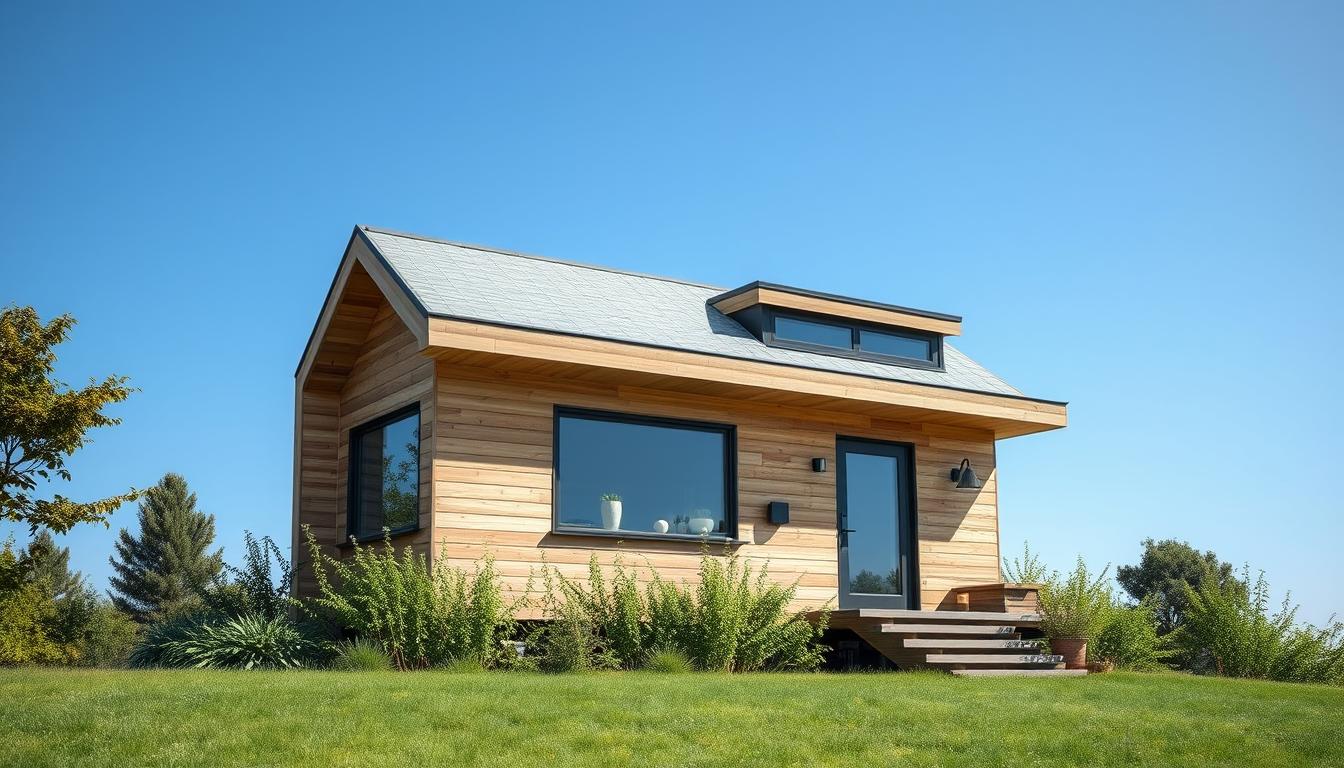In the world of modern minimalism, a home’s exterior design is key. This is especially true for the roof. Flat roof options in tiny house designs boost both looks and value.
About 50% of homeowners focus more on the inside of their homes. Yet, the outside, especially the roof, is just as important. Improving the roof and exterior can make a tiny house look and feel better.
The trend of minimalist rooftop designs is growing. It’s because these designs are sleek and modern.
Key Takeaways
- Flat roofs enhance the kerb appeal and value of tiny homes
- Exteriors play as vital a role as interior designs
- Aesthetic improvements like front door embellishments and pathway upgrades matter
- Flat roof designs align with modern, minimalist trends
- Emphasising both visual and functional aspects is crucial for tiny house living
Why Choose a Flat Roof for Your Tiny House
Choosing a flat roof for your tiny house has many benefits. These roofs look sleek and modern. They are also simpler to build and keep up than pitched roofs.
Flat roofs are cheaper to make because they need less material and work. This makes them a great choice for those who want a simple, affordable design.
Flat roofs are also great for adding outdoor spaces. You can turn small areas into useful spots like gardens or patios. This makes the most of tiny house living.
But, flat roofs can have problems with water. They need good drainage to stop water from pooling and causing leaks. Getting the drainage right is key to a roof that lasts.
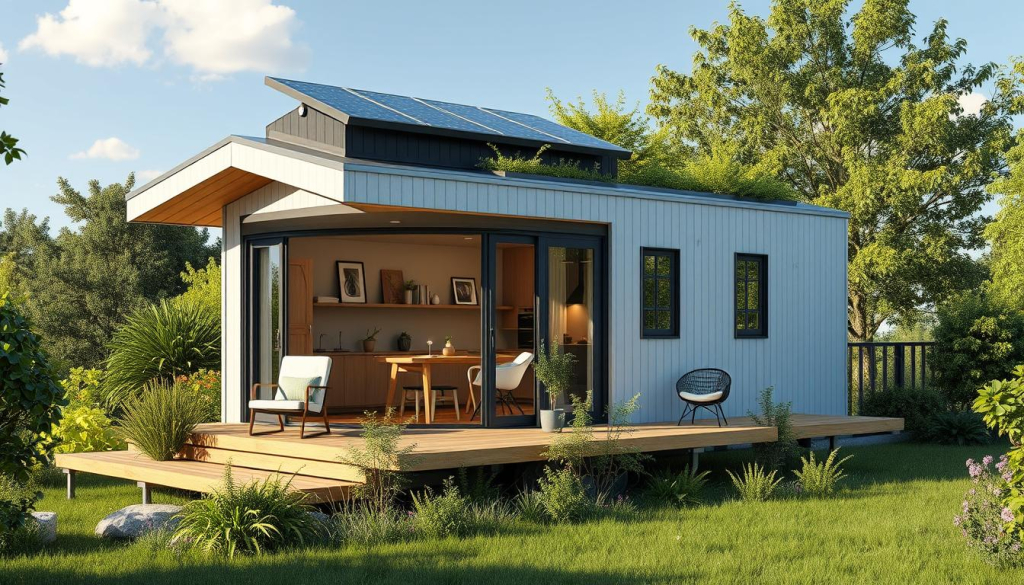
Modern materials like EPDM are used in flat roofs. They are waterproof, fireproof, and strong. They can last up to 50 years, saving you money on upkeep. For more tips, check out expert advice on flat roofing.
Design Considerations for a Flat Roof Tiny House
Designing a flat roof tiny house requires careful thought. You need to pick the right materials, ensure good insulation, and find effective drainage solutions. Each step is crucial for a comfortable and green living space.
Materials
Choosing durable roofing materials is key for your tiny house’s long life. Bitumen is a classic choice, but PVC membranes are modern and low-maintenance. Metal roofs, like aluminium and steel, are also great because they’re light and weather-resistant.
Insulation
Good insulation keeps your tiny house warm in winter and cool in summer. Use materials like rigid foam or spray foam for the best results. This not only keeps you comfortable but also saves energy, making your home more eco-friendly.
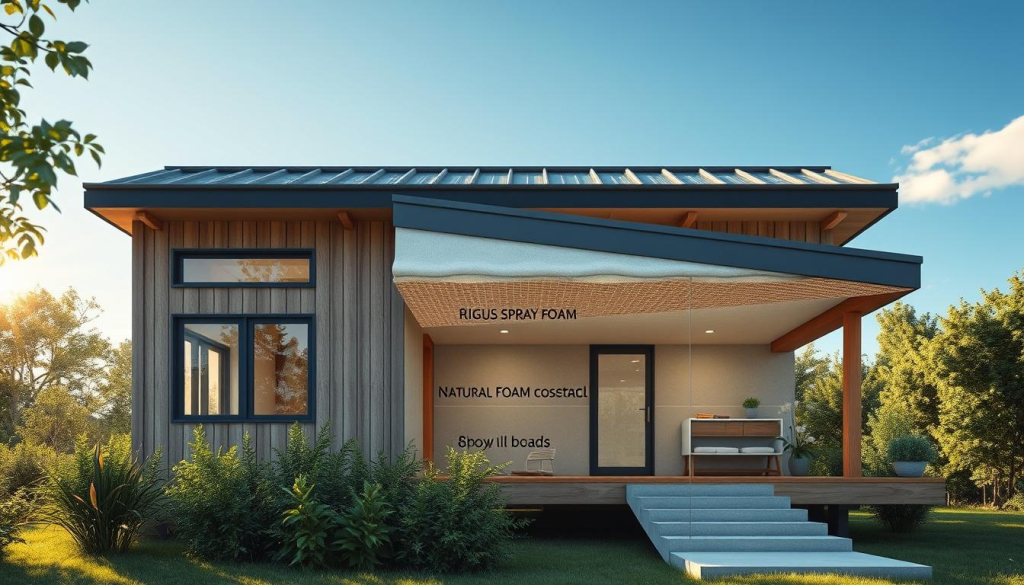
Drainage Solutions
Drainage systems are essential to stop water pooling and damage. Use slight slopes and internal gutters for water to flow away. This keeps your tiny house strong and leak-free, ensuring long-term comfort and safety.
Maintenance Tips for Flat Roof Tiny Houses
To keep your flat roof tiny house in top shape, follow some key maintenance tips. Regular checks and managing debris well can help your roof last longer and save you money. Let’s look at the important steps to follow.
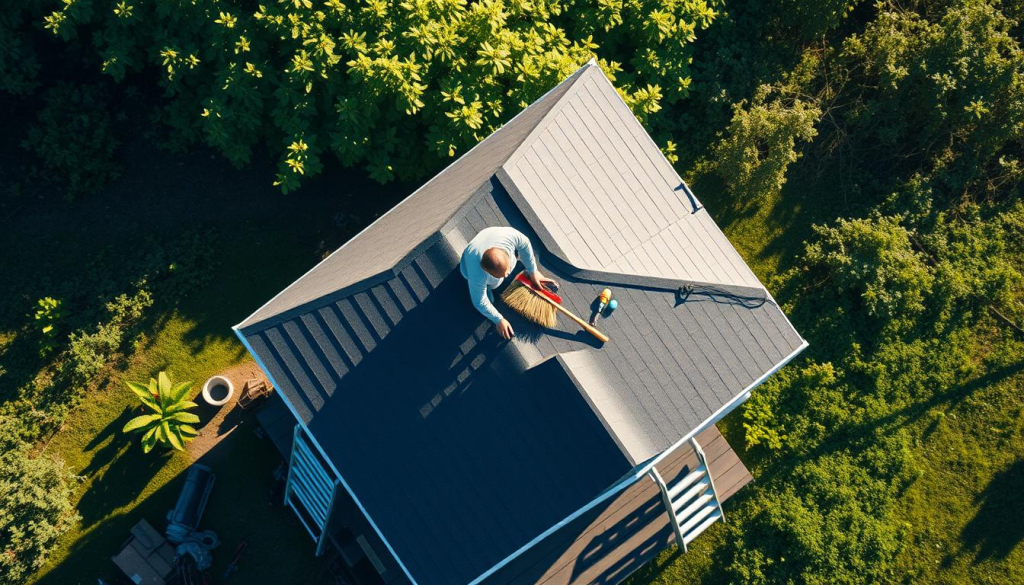
Regular Inspections
Checking your roof regularly is crucial. Look for cracks, blisters, or leaks. It’s best to inspect your roof twice a year. Do it in the spring after winter and again in autumn before the weather gets bad.Regular inspections help catch small problems early. This way, you can fix them before they get worse and cause more damage.
Debris Removal
Keeping your roof clear of debris is important. Leaves, twigs, and other stuff can block water flow. If water stays on your roof for more than 48 hours after it rains, it’s a sign of poor drainage. This can damage your roof and encourage algae to grow. Make sure to clean your roof regularly and keep gutters and downspouts clear.
By following these maintenance tips, you can avoid expensive repairs and keep your tiny house safe and efficient. For more information, check outour detailed guide on caring for flat roof tiny houses.
Sustainable Options: Green Roofs and Solar Panels
Adding green roofs and solar panels to your tiny house can cut down its carbon footprint. It also boosts energy efficiency. These choices are good for the planet and your wallet. Let’s explore how they can turn your tiny house into an eco-friendly haven.
Green Roofs
Green roofs are great for tiny homes, offering looks and practical benefits. Here’s why they’re a smart pick:
- Green roofs can cut summer energy use by up to 75%.
- They cost about £8-17 per square foot, a good deal for the long run.
- The UK’s green roof market grows by 17% each year, showing their popularity.
- They weigh 7-23kg per square foot, adding little to the roof’s load.
- Green roofs can make your roof last up to 23 years longer, saving on replacement costs.
- They also offer natural sound insulation, making your home more comfortable.
Solar Panels
Solar panels are gaining fans among tiny house lovers for their green energy. Here’s why they’re a wise choice for eco-friendly homes:
- Solar panels cost about £26 per square foot but save £1.50 per square foot yearly on bills.
- They pay off in 13-15 years, a solid investment for the future.
- In the UK, a 4kWp system can save £507 yearly, cutting down on bills.
- Pairing solar panels with green roofs boosts efficiency by cooling the area.
- They last 30-40 years, offering long-term savings and benefits.
Choosing eco-friendly roofs and solar panels makes your tiny house greener. It also helps you live more affordably and independently. By using green roofs and solar panels, you can enjoy a greener, smarter lifestyle that’s good for your wallet and the planet.
Cost Implications of Building and Maintaining a Flat Roof Tiny House
Thinking about the money side of a flat roof tiny house is key. Flat roofs are simpler and cheaper to start with than other types. They can save up to 20% on building costs, which is great for tiny house budgets.
A typical tiny house can have a flat roof made of asphalt or metal. Metal roofs cost more but last longer and need less upkeep. Asphalt shingles are cheaper but might need more repairs over time.
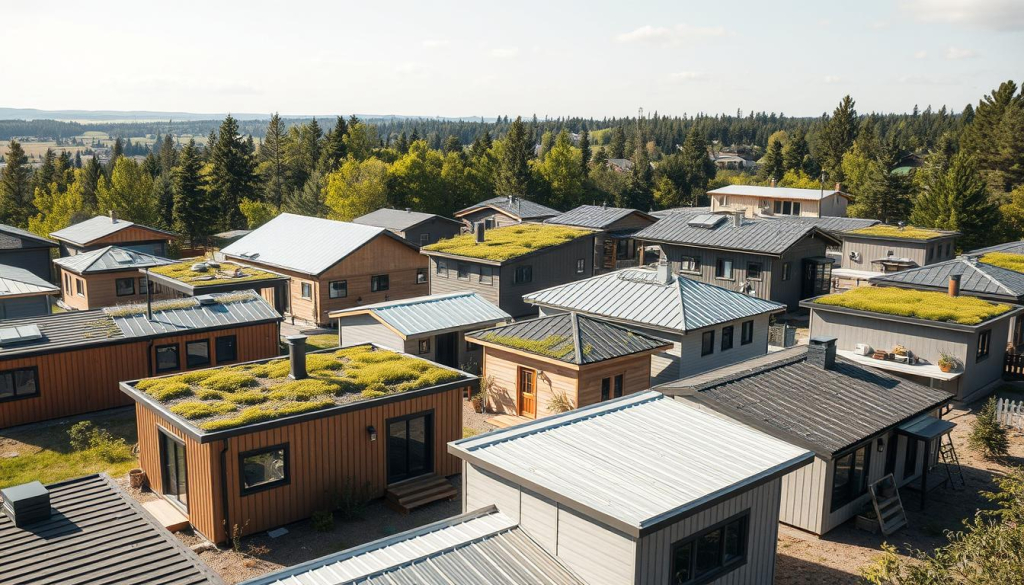
Don’t forget about maintenance costs for a flat roof tiny house. Regular checks, 1-2 times a year, can spot problems early. This keeps the roof in good shape and avoids big repairs later.
It’s also wise to budget for tiny house repairs. Even small issues can add up. Using top-notch materials can mean fewer repairs, saving money in the long run.
Flat Roof Tiny House: Real-life Examples in the UK
Looking at flat roof residential projects in the UK gives us great ideas. These British tiny home designs show how to mix beauty, green living, and practicality.
A standout tiny house example UK is a 30m2 home with a 10.5m2 deck. It was built for £46,800 and now worth £70,000. This shows it’s a smart investment.
British tiny homes are known for:
- Using eco-friendly materials
- Maximising space
- Being energy-efficient
The Grandview Laneway Residence has a green roof. It shows how flat roofs help save energy and keep homes cool.
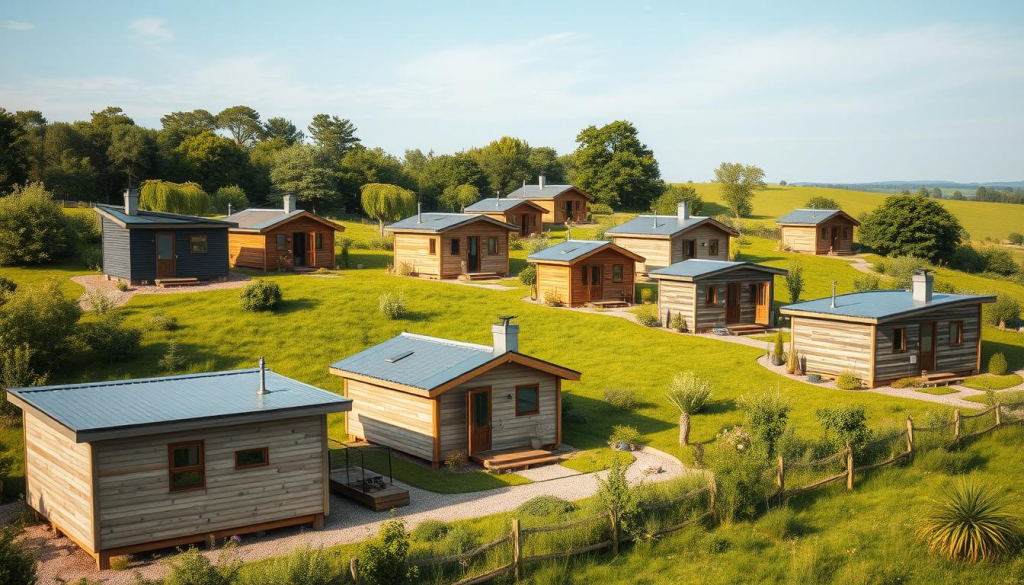
The Decatur Island Cabin has an outdoor kitchen under a canopy. It’s a smart way to use space, perfect for the British weather.
Other notable flat roof residential projects are the Cascade Modern and Ohana model ATU tiny homes. They prove flat roofs are both stylish and practical.
These tiny house examples UK inspire us to think about flat roofs. They’re not just pretty; they’re also good for the planet and our homes.
Conclusion
Flat roof tiny homes are becoming more popular. They offer practical and stylish benefits. These designs fit modern living into small spaces, meeting both eco and personal style needs.
Flat roofs are cost-effective and use space well. They need less material and support than pitched roofs. This makes them cheaper to build. They last 10 to 15 years, with some lasting up to 40 years.
Flat roof homes also support green roofs or solar panels. This makes them eco-friendly. With more examples in the UK, flat roof tiny homes are leading the way in sustainable living.


